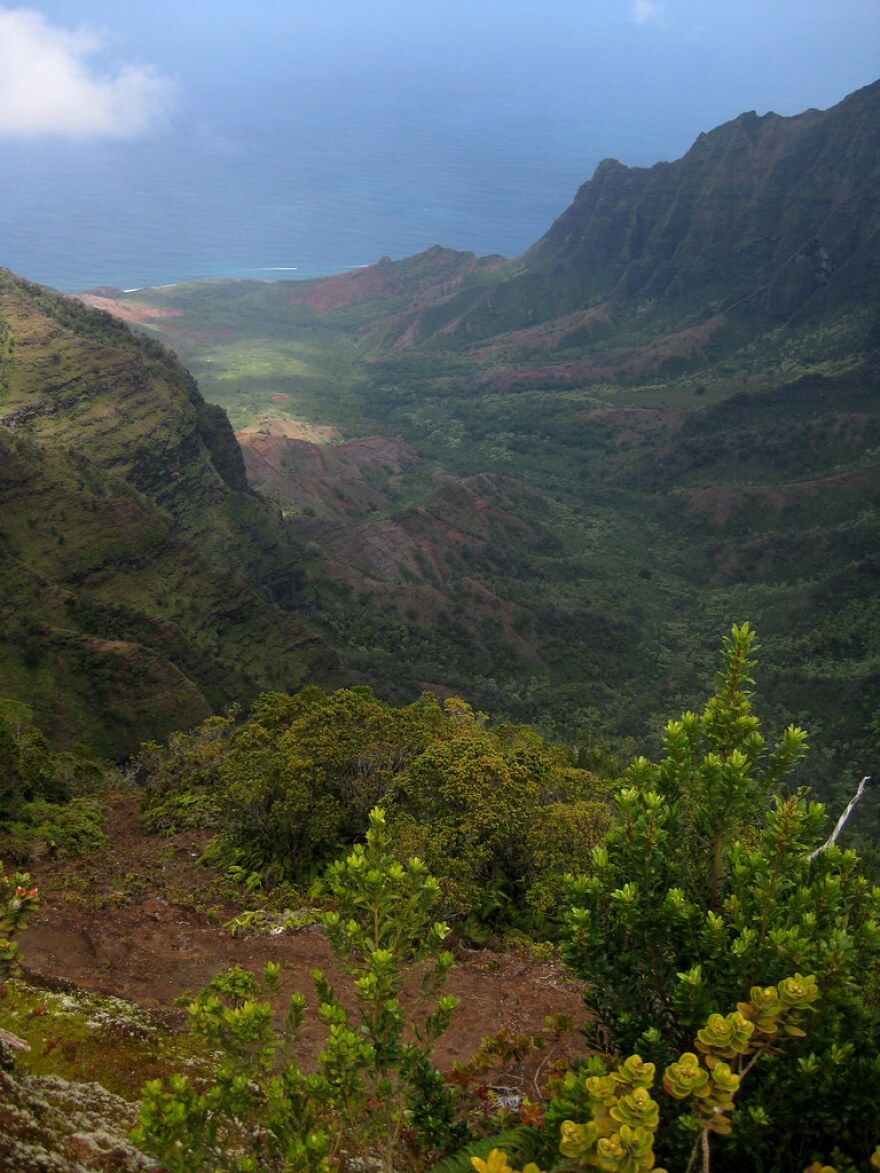In gratitude for the thirty years Hawai‘i has nurtured his professional life, Hawai‘i Symphony principal oboist Scott Janusch came up with a novel idea. He would use a piece of endemic Hawaiian wood to create a very special oboe, one that can be passed on to future generations.

Windward audiences enjoyed the Hawaiian Oboe Legacy Project already at WCC’s Palik?, but the program runs again at the Doris Duke Theatre May 20th. All Chamber Music Hawai‘i performances are free for students.
Once oboist Scott Janusch had the idea, somehow, the right pieces of wood showed up—in the hands of Kaua‘i luthier Mickey Sussman, of Anahola Instruments. Just so happens, cultural practitioner Konohiki Ed Kaiwi, had given Sussman a centuries old piece of Kauila wood from K?ke‘e.
Sussman: It’s pretty wild to work with it. It’s really dense, almost like petrified wood. Make and instrument out of petrified wood, give me a break. Nobody will say age, because you can’t count rings like on a fir tree or redwood tree. The grain is so tight, you can’t distinguish from one year to another.
Kauila is the famously hard wood Hawaiians had used for weapons, tools and ceremonial objects Sussman says there are two species of kauila.
Sussman: This one is kind of dark reddish, with even darker red streaks in it, almost the color of blood.
Sussman cut blanks and sent them to London with Janusch to be carved by Howarth of London, master instrument makers.
Sussman: They turned a little on their machines and said, Oh, we like it, it responded. They let it sit some more, another six months went by, they said, we’re turning it some more, and said, we like it! They sent some pictures and said, we still like it. Then, I got word that Scott was going over there. They got hardware.
They would do a test bore and subject it to differences in temperature and humidity just to see if the wood would stabilize, and actually not fall to bits and crack. A two and a half year long trial. Once the wood settled, they drilled the fine holes and put in the keys.
Janusch: I’m so delighted with the limited amount of wood I had, they found enough of the good stuff to make a fine instrument. So many things came together in the creation of the piece and the music, all the stars aligned, it’s been amazing.

Finally, after 2 ½ years, last December the world’s only kauila oboe with its 18 karat gold keys, came home with Janusch.
It’s incredibly beautiful, and complex, with twenty plus holes shielded by levers and keys.
Janusch: The mechanism is very intricate and very sophisticated. These approximately 25 adjustments screws all have to be in exact sync in order for the instrument to do its job.
The new oboe will debut in a piece composed in its honor, Na Kau ‘Elua, The Two Seasons by Jon Magnussen, Associate Professor of Music at UH West O‘ahu. His music has been called “beautifully textured" (NY Times), and "thoughtful... deeply imaginative" (L.A. Times).
The Two Seasons is broken into 12 “vignettes,” each relating to a phase of the Hawaiian calendar, and to a specific use of kauila wood. Magnussen’s research into the many uses of kauila wood led to musical characterizations of those uses, as weaponry, for the runners of a holua sled, for ceremonial items, and more. To honor the period, 300 years ago, when the wood was a living tree in K?ke‘e, Magnussen drew on an early 18th century composer for inspiration.
Magnussen: I thought to honor that age I would reach back into the early 1700’s and incorporate some of the work of Antonio Vivaldi, his Four Seasons. That’s why this piece is called The Two Seasons, since we don’t have four seasons here.
Magnussen, who was raised on Kaua‘i, has gone back to its forests to commune with living kauila as part of the process. It happens that Magnussen’s father had served on the Kaua‘i Public Radio Board for years with Mickey Sussman. In fact, Larry Magnussen had taken Sussman to a Hawai‘i Symphony Education Outreach concert several years ago that Sussman enjoyed very much. After the concert, at lunch, Scott Janusch confided his dream of creating a legacy instrument of native wood that could be passed down for generations.
Mickey Sussman had specialized in native wood instruments since his arrival on Kaua‘i in the 1970’s. Already a luthier, he set up shop in a pool hall in Hanap?p? and began repairing guitars and ‘ukulele for the Kanahele’s and Keale’s of Ni‘ihau. Sussman says they all had Kamaka’s and Martin’s they had inherited from their grandparents.
Sussman: They hanaied me and learned to love me. They taught me the poems and stories, and I made instruments for them. I had the privilege of knowing them.

Sussman had already done work for Konohiki Ed Kaiwi when he brought the piece of kauila in. This time, Kaiwi wanted two 100% kauila ‘ukulele. Done. Later, after an accident in the local synagogue, more of the kauila wood went to creating a new ark for a torah! Sussman was able to find enough fine pieces remaining to fashion the three parts of an oboe.
Janusch will play this unique instrument for a year, then Live Music Awareness, a nonprofit that is raising $40,000 for the project, plans to make it available for future musicians.
A full orchestral arrangement of The Two Seasons is planned for Fall 2019 with the Hawai‘i Symphony.





